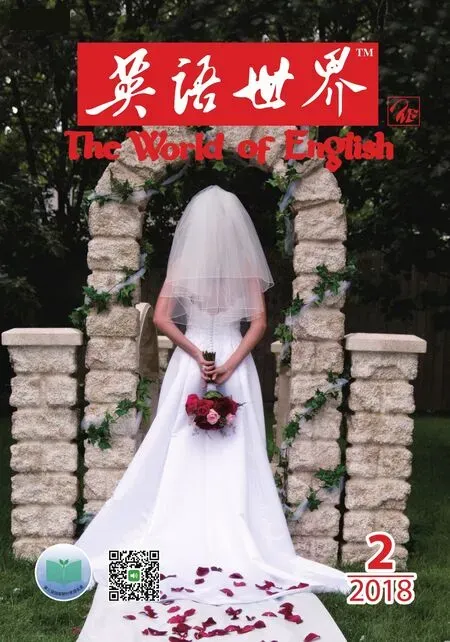Engagement Traditions and Their Origins
By Edel Blake

It may never have crossed your mind before (or maybe it has), but there’s actually an historical explanation for almost every element of your engagement; from getting the ring to telling the world about your happy news.
Asking for your hand
[2] If you or your other half is a traditionalist at heart, you’ve probably agreed that the groom should ask the bride’s father for his blessing before‘officially’ popping the question to her.This dates back to when women weren’t exactly thought of as equal members of society and marriages weren’t really the romantic events they are now. Instead they were regarded as a contract between two families, and the bride was the key component since she had the responsibility of giving birth to the family’s next generation. The groom would approach his future father-in-law and ask for his permission to marry his daughter. If he refused (and they often did back then), then that was the end of the courtship1courtship求爱;追求。!
从戴上戒指那一刻到向众人宣布喜讯,你可能从未想过(或许也曾想到)自己订婚过程中的每一个元素其实都有史可稽。
牵起你的手
[2]如果你或你的另一半骨子里是传统主义者,那你可能认同新郎只有在获得新娘父亲祝福后才能“正式”向她求婚。这个规矩可以追溯到很久以前,当时的女性并未真正被当作平等的社会成员,而且结婚也不如现在这般浪漫。相反,她们被当作两个家庭间的契约,而新娘是契约中的要件,因为她肩负着为家族繁衍后代的责任。新郎会拜见他未来的岳父,请求他把女儿嫁给自己。如果女方父亲拒绝(旧时他们往往如此),那就意味着这场恋情也得画上句号。
The 3 month’s salary rule
[3] Get ready for a shock… there is no legitimate historical reason for this particular tradition. The market value of a diamond is in no way associated with anyone’s salary! It was all a massively successful marketing campaign dreamt up in 1936 by diamond sellers DeBeers,who wanted people to spend more on diamonds. They deftly managed to create a sense of luxury, rarity and prestige around the humble diamond, and that’s why they’re still so expensive to this day. They’re actually not that rare at all—there’s still many, many decades worth of supplies hidden in the earth. But don’t let that stop you from spending all your savings on something your other half will love forever.
Down on bended knee
[4] People don’t really get down on one knee for much these days, unless they’re tying their shoelaces. So why do we do it when we’re proposing marriage? It’s a tradition that dates back to the days of knighthood, chivalry and formal courtship (i.e. medieval times and beyond). Knights would get down on one knee in front of their lord as a display of respect, obedience, and loyalty. It was also a common occurrence in religious ceremonies, and in those days marriage and religion were intrinsically2intrinsically本质地;固有地。linked.So when a courteous gentleman was proposing to his lady, pledging his allegiance3allegiance效忠。to her and declaring his undying love for her, getting down on one knee was the natural thing to do.
3个月薪水规则
[3]请不要大吃一惊……这个特殊的传统并没有正当合理的历史依据。钻石的市价无论如何都不会随着人们收入的高低而发生变化!为了让顾客能在钻石上多掏钱,戴比尔斯钻石公司于1936年创想出这个营销活动,并大获成功。他们巧妙地将原本平凡普通的钻石打造出奢华、稀罕及尊贵的感觉,这也成为钻石至今一直价格不菲的原因。不过钻石其实根本就不稀少——地球上仍有着可供开采几十年的钻石储量。但也别因此在买钻戒时舍不得倾尽所有,你奉上的戒指将成为你另一半的此生挚爱。
屈膝跪地
[4]除了系鞋带以外,现在的人都不怎么屈膝。那为什么我们在求婚时却要这么做呢?这个传统可以追溯到骑士精神、绅士风度以及正式求爱的盛行时期(即中世纪和再早之前)。骑士会在自己的领主面前单膝跪地以示尊敬、服从和忠心。单膝跪地的场面也常常出现在宗教仪式上,而在那个年代,婚姻和宗教密不可分。所以当一位谦谦绅士在向他心爱的姑娘求婚时,为了表达他对她不离不弃的决心以及天长地久的爱意,单膝跪地就是再自然不过的事了。
The engagement ring
[5] You can thank the Pope for that ring on your finger—yes, really. In 1215,Pope Innocent III4教皇英诺森三世,史上最具影响力的教皇之一。introduced a law stating that couples who wanted to marry had to observe a waiting period between agreeing to the marriage and actually going through with the legal and spiritual contract. During this waiting period,couples were ordered to wear a ring on their finger as a mark of their commitment to each other and their upcoming marriage. It was also at this time that marriages had to take place in a church in order to be ‘official’. Engagement rings then were very simple affairs and usually just made out of whatever metal was cheap. Precious metals were reserved for the elite members of society only.
The diamond
[6] … And that’s where the diamond comes in. In 1477, Archduke Maximilian of Austria belonged to one of the biggest ruling dynasties in Europe, the Habsburgs5哈布斯堡王朝,欧洲的一个重要王室家族,被广为人知的是其家族成员在1452年至1740年期间担任了所有正式推选的神圣罗马帝国皇帝,以及曾是西班牙和奥地利帝国的统治者。王朝的名字来自于家族的所在地——瑞士阿尔高州的哈布斯堡城堡。. He set his sights on making Mary of Burgundy6勃艮第的玛丽,勃艮第公国最后一个公爵大胆的查理(Charles the Bold)的独生女。his wife, and to show his dedication to her, presented her with a ring with the letter ‘M’ spelled out in small flat pieces of diamond. At this point in history diamonds were extremely rare—the huge mines that we know today weren’t discovered for another 300 years.Apparently, the piece of jewellery cost so much that it put a large dent in his finances,which helped contribute to debt so big by the end of his life that even a decade’s worth of income from all of his lands wouldn’t have covered it!
订婚戒指
[5]手上戴戒指的风俗恐怕是拜教皇所赐——千真万确!1215年,教皇英诺森三世颁布一项法令声明:二人若要结为夫妇,须经历等待期。该等待期始于承诺结婚之时,终于获得法律性、宗教性契约之时。在等待期里,男女二人须各自戴上戒指,标志着对彼此和即将到来的婚姻的承诺。也正是从这个时候起,婚礼须在教堂举行,以示“正式”。订婚戒指在那时不过是稀松平常的物件,通常由廉价金属制成。稀有金属只为社会精英人士预留。
钻石
[6]……接下来钻石要登场了。1477年,奥地利大公马克西米利安是哈布斯堡皇室的一员,哈布斯堡王朝曾是欧洲统治地域最广的王朝之一。他打定主意要娶勃艮第的玛丽为妻,为了表现他的深情,他向她献上了一枚镶有字母M的戒指,M由扁平的小钻拼成。在当时的历史条件下,钻石极其稀少——距此300年后,人们才发现了如今众所周知的巨大钻石矿。显然,这件稀世珍宝让他死前债台高筑,甚至其领地十年的全部收益都算上也还不清!
The ring finger
[7] Ever thought about why your engagement ring is supposed to be worn on the third finger of your left hand? It’s actually quite romantic compared to some of the other explanations in this list… The ancient Egyptians believed that the vein running through this finger leads directly to your heart. Either way, the Egyptians along with other ancient civilisations like the Greeks and Romans wore rings on this finger to symbolise their commitment to another person, be it a business partnership, love, or even slavery!
The engagement announcement
[8] Again, you can thank Pope Innocent for this one. At the same time as he introduced engagement rings, he also decreed that any couples intending to marry had to formally announce it.The idea was to give other people an opportunity to intervene if the marriage was incestuous7incestuous乱伦的。! It’s also where the ‘speak now or forever hold your peace’ moment in many a romantic comedy and in some church ceremonies comes from. A far cry from8a far cry from和……大相径庭。the Facebook announcement of modern times, isn’t it?!
无名指
[7]你有没有想过为何你的订婚戒指要戴在左手的无名指上?有种说法比起本文对其他传统的解释更为浪漫……古埃及人认为流经无名指的血管直通你的心脏。古埃及人和其他古希腊、古罗马等文明古国的人民都在无名指上戴戒指来象征他们对他人的承诺,承诺的事项五花八门,有商业伙伴关系、恋爱关系,甚至还有主奴关系!
宣布订婚
[8]现在,你又能再一次感谢教皇英诺森了。他在推行订婚戒指的同时,也制定法律:任何想要结婚的男女都要正式地对外宣布。他的初衷是让人们有机会阻止乱伦婚姻。在众多爱情喜剧和一些教堂里时常听到“有异议的请现在提出, 否则请永远保持缄默”,出处就在于此。这是不是和当今在脸书上就能宣布的方式大相径庭?!
And some lesser known traditions from around the world…
Leap Year Proposals: Every time a leap year comes around something unique happens in Ireland and Scotland. On ‘Leap Day’, the 29th of February, ladies in love take it upon themselves9take sth upon oneself 某人(主动)承担某事。to get down on one knee and propose to their men, instead of the other way around. It’s always fun to turn traditions on their heads10turn sth on its head 完全改变(某物)。, but you’re still technically sticking with11stick with继续忠于,继续支持。a tradition with this one—just a different one! It’s a practice that’s been in place for centuries,and some lucky guy always makes the news in Ireland after a surprise proposal from his lady.
Kenyan Beads: In some Kenyan tribes, the man will send beads to the home of the woman he wants to marry.If she accepts, she’ll keep the beads and wear them. If her family agree with the marriage, they’ll add their own special ornament to the beads too. In tribes in other African countries such as Ghana,the groom’s uncle and mother will visit the bride’s house to propose marriage on his behalf!
一些世界各地鲜为人知的传统……
女性求婚日:每逢闰年会在爱尔兰和苏格兰发生一些特别的事。在2月29日“闰日”这天,恋爱中的女性会一反传统,主动出击,单膝下跪向男友求婚。颠覆传统让人倍感有趣,但从严格意义上来讲,这算不上是离经叛道——只不过换了一种方式践行传统!这个习俗已存续了数百年,有些幸运的男士往往会因为女友突然对自己求婚而登上爱尔兰的新闻。
肯尼亚珠链:在一些肯尼亚部落里,男人会给心仪结婚对象的家里送珠链。如果她接受了,那么她会好好保管并戴上珠链。如果女方家庭同意这桩婚事,他们也会给珠链加上自家特殊的装饰物。在其他一些非洲国家(如加纳)的部落里,新郎的舅舅和母亲会代表他前去女方家里求亲。
Thong Mun12Thong Mun(泰国)金饰。: The tradition of Thong Mun in Thailand is a very important part of courting and marriage. It involves gifting the bride and her family with something made from 24 carat13carat开(黄金成色单位,纯金为24开)。gold, usually jewellery but not always. It’s symbolic of the groom’s commitment and love, and is an integral part of the wedding ceremony too.
Arranged Marriages: In India and Pakistan, arranged marriages are still commonplace. This means that instead of the groom courting and then proposing to the bride, their families meet to determine if they would be a good match instead. In many cases it’s not half as bad as it sounds—the families will most likely be on very friendly terms and the bride and groom have often known each other for years beforehand.
Flash Mobs14flashmob快闪族。: In recent years it’s become a phenomenon in China and other Asian countries for grooms to go all out15go all out全力以赴。when popping the question.
金饰:在泰国,赠送金饰的传统是求爱及结婚过程中非常重要的一环,包括赠与新娘及其家庭一些24开黄金制品,通常送的是首饰,但也并非家家如此。这种做法既象征着新郎的承诺与爱意,也是婚礼上必不可少的一道程序。
包办婚姻:在印度和巴基斯坦,包办婚姻非常普遍。包办婚姻指新郎不必追求新娘进而向她求婚,而是仅凭双方家长的会面商讨,就决定二人是否适合结婚。不过很多案例表明,包办婚姻并没有听上去那么糟糕——多数家庭基本上都能和睦相处,而且新郎新娘在婚前可能相识多年。
快闪族:这是近年来在中国和其他亚洲国家兴起的一种风尚,新郎使出浑身解数来正式求婚。新郎们组织形形色色的快闪族在公众场合进行表演
〔〕〔〕
Specifically, they organise all manner of flash mobs—usually in public—for their brides to enjoy. As the performance reaches its finale, the groom will emerge from hiding and get down on bended knee in front of his bride while everyone else cheers him on. ■来取悦他们的新娘。表演进入尾声时,新郎会从包围他的人群中现身,然后在众人的欢呼鼓舞下在新娘面前单膝跪地示爱求婚。 □

